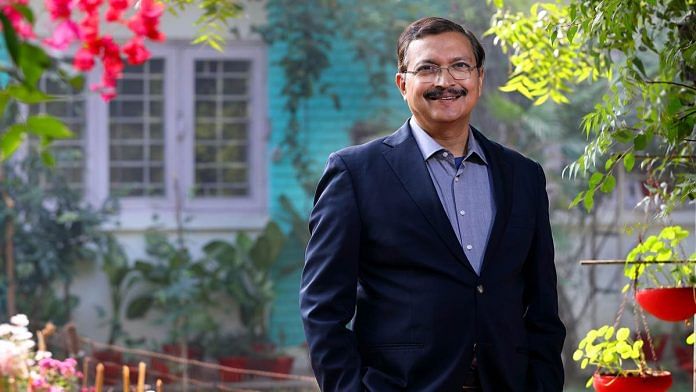Bengaluru: The Infosys Prize 2023 in Engineering and Computer Science has been awarded to Professor Sachida Nand Tripathi of the Indian Institute of Technology (IIT) Kanpur, for deploying large-scale air pollution sensor networks and using Machine Learning to obtain information from the data collected. He has also been recognised for his work into understanding airsheds and haze formation, as well as formation of new types of aerosols.
According to the press release, Professor Tripathi’s work has shown that the crucial differences between observations of winter haze formation in Delhi and other cities like Beijing are that the nano-particle growth rate in the national capital is much higher and happens at night without photochemistry (chemical effects of light). This finding, it says, “holds the key to mitigating air pollution in India”.
ThePrint spoke to Professor Tripathi on the significance of his work and its applications.
Q: How did the large-scale network of air sensor project come along?
A: Back in 2017, we developed indigenous sensors to measure parameters like particulate matter and ozone, and deployed them across Mumbai, Delhi, and inside IIT-Kanpur. The amount of data coming in required us to work with various other engineers and machine learning. We then diversified into problems of machine learning, broadly classified into, making the data perfect, increasing measurements, classifying data accurately, and forecasting.
The project was sponsored by the Department of Science and Technology, and I’m also running a centre as a principal investigator which is funded by private entities and philanthropy. One of the flagship projects is putting a sensor inside every administrative block of the two largest states in India, Uttar Pradesh and Bihar. We’ve already placed 1,100 sensors, and by next month, we’ll be at 1,400. We have also deployed sensor networks in Lucknow, Guwahati, Chennai, Kanyakumari, and Jaipur.
We work closely with city and government officials in Bihar and UP. They are already making use of this data to deal with the problem of air quality management.
Air flow does not follow human boundaries, so phenomena like airshed and micro airshed have to be understood with proper data so that we can figure out their geographical spread. We have done this in Bihar using machine learning techniques.
Q: What work have you done on haze formation?
A: Using the data we get, we are trying to obtain more granular information about people’s exposure to air pollution. Apart from our sensor data, we are also making use of satellite images and AI (Artificial Intelligence) pipeline to improve the resolution of our data.
We have looked at the formation of haze over Delhi and discovered that there are factors that contribute to the sudden rise in PM 2.5 concentrations in a very short span of time in winter evenings, at about 7 pm. And then that concentration spikes from 60-70 micrograms per cubic meter to 400 by early morning, in just about twelve hours. Precise measurements have indicated us to investigate more and we have found that this is because of biomass burning that drives the growth of nightly particulate matter in Delhi’s atmosphere.
Q: How will your findings be applied to air pollution mitigation?
A: Our data can help local governments think differently about air flow management. Understanding the flow of specific particulate matter can help design cities that will prevent accumulation of certain kinds of particulate matter.
We will deploy a network in tandem with urban mobility, to help understand how traffic pollution flows. This will help streamline avoiding congestion and improving air quality and human health in cities, and to achieve sustainable city goals in the near future.
Q: What is your background?
A: I am an environmental engineer. I came to India in 2003 and started my career as a faculty member at IIT Kanpur. For 19 years, I was an active member in civil engineering, and now I’m faculty in two departments — civil engineering and sustainable energy engineering at IIT Kanpur. I work in the area of air quality management in a broadest way, climate change, and also urban sustainability.
Q: How did you move from civil engineering to environmental engineering?
A: IIT-Kanpur is a pioneer in environmental engineering curriculum in the country, starting back in 1960. This is the first engineering institute to start a full-fledged programme in environmental engineering as part of civil engineering.
I’m a civil engineer by training, and I then moved into environmental engineering for my higher studies. The department hosts a number of faculty members and programme in Master’s as well as a PhD level in environmental engineering. And that’s where I pursued my work in air quality, aerosols, climate change, and now, sustainable cities.
(Edited by Gitanjali Das)



